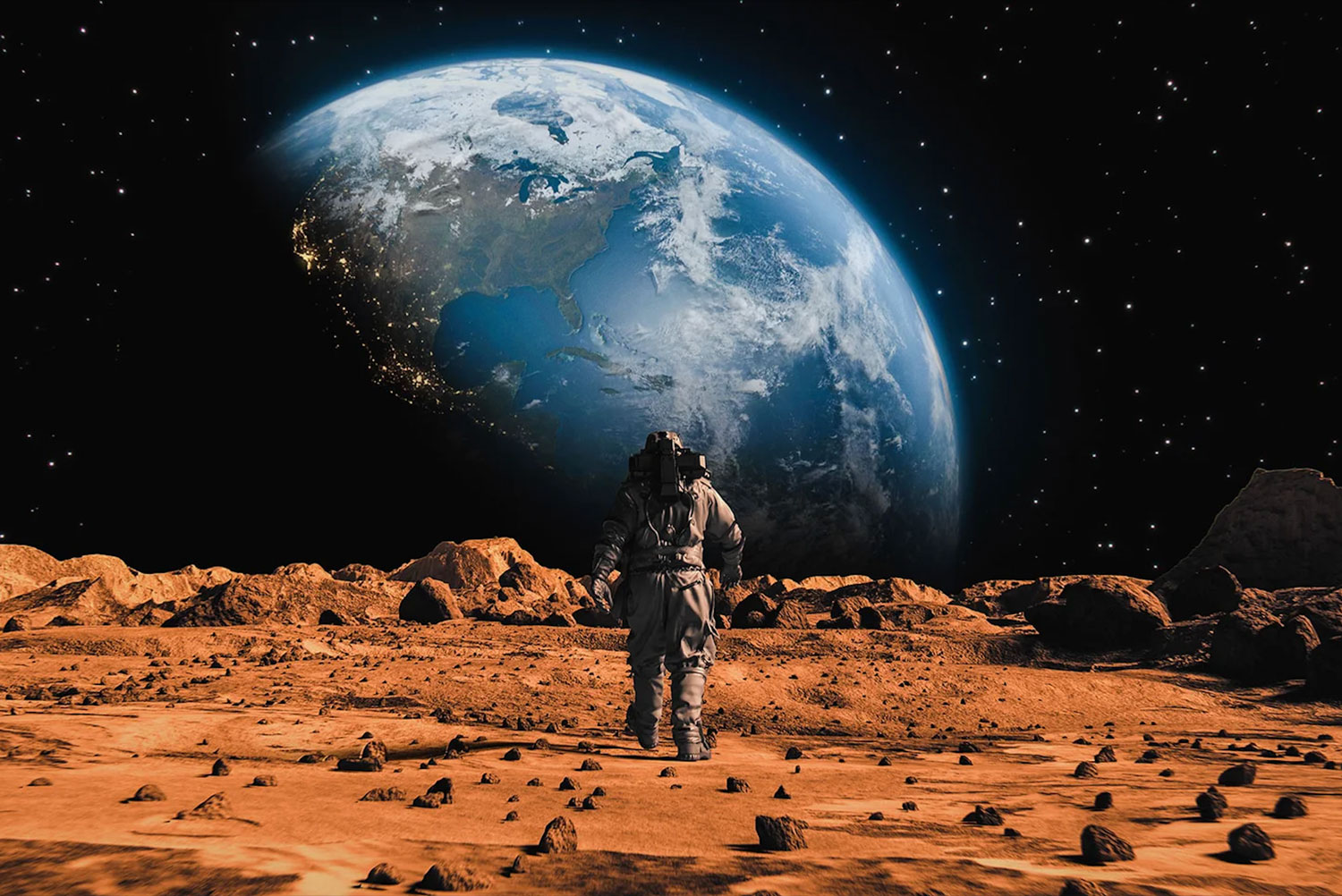DEDICATION
byDedication opens with a profound tribute to those on Earth who remain enveloped in ignorance, presenting “The Planet Mars and Its Inhabitants” as a guide to illuminating their path toward truth and understanding. The book is offered as a beacon, striving to shed light on the mysteries of the cosmos and human existence, bringing clarity to the unknown. It stands as a call to those who seek enlightenment, inviting them to explore new realms of knowledge and awareness beyond the earthly confines. Through this dedication, the author expresses a deep commitment to educating the world about the higher understanding of life, as revealed through interplanetary experiences, suggesting that only by broadening one’s vision can true wisdom be attained.
In the opening passages, the author paints a vivid picture of Mars, highlighting its notable features such as the North Polar Cap and an extensive canal system that stretches across the planet. The canals, although not all visible in Earth’s telescopic views, are a testament to the advanced engineering of Martians, demonstrating their mastery in hydraulic systems. Spanning vast distances, many of these canals run parallel, set approximately seventy-five miles apart, with smaller lateral canals weaving through the Martian landscape, enabling efficient water distribution. These canals, along with the ancient sea beds now flourishing with vegetation, reflect a long history of innovation and ecological adaptation, illustrating how Martian civilization has harmonized with their environment. This sophisticated water management system not only sustains the planet’s agricultural output but also showcases Martian ingenuity and their ability to cultivate life on an otherwise arid world.
At the heart of the Martian civilization lies the City of Urid, strategically located near a vast reservoir just north of the equator. This city, a bustling center of culture and activity, is surrounded by a network of canals, creating a thriving oasis amidst the desert landscape. Urid stands as a model of Martian society, with its intricate water systems ensuring the survival and prosperity of its inhabitants. These water management systems are integral to the city’s infrastructure, enabling a steady supply of resources to sustain its population and agricultural endeavors. Urid’s position near a major water source allows for the efficient distribution of water, making it a central hub for the Martian economy and way of life. The city, with its blend of advanced technology and natural resource utilization, exemplifies the Martian approach to living in harmony with their environment.
In addition to describing the geography and society of Mars, the author addresses the physical challenges encountered by those attempting to channel Martian experiences, particularly the difficulty in adjusting to the planet’s thinner atmosphere. This detail adds an intriguing level of realism to the narrative, highlighting how the Martian environment can be physically disorienting for those not accustomed to it. The adjustment to Mars’ lower oxygen levels is especially difficult during trance states, where the medium must acclimate to the reduced air pressure and breathing discomfort. This physical aspect not only adds authenticity to the experiences being shared but also emphasizes the stark differences between Earth and Mars, creating a deeper understanding of the Martian way of life. Such challenges further underscore the unique nature of the Martian existence, offering readers a glimpse into the complexities faced by those who call the Red Planet home.
The author, Mr. Kennon, goes on to provide the background of the book’s creation, revealing that the project began on January 4, 1920. This timeline marks the beginning of an ambitious endeavor to expose the intricacies of Martian life to Earth’s inhabitants, an undertaking driven by a vision of interplanetary connection. The inspiration for the book came from divine visitations, particularly from Jesus Christ, who is said to have explored not only Earth but the entire solar system, including Mars. This celestial endorsement adds a layer of spiritual depth to the narrative, intertwining the physical and the divine, offering readers a perspective of Martian civilization that is not just scientific but also metaphysical. Through this spiritual connection, the book seeks to bridge the gap between human understanding and the broader cosmic truths, encouraging readers to reflect on their place in the universe and their potential for spiritual and intellectual growth.
The book’s central aim is to provide a detailed and truthful account of Martian society, culture, art, industry, and philosophy, presenting them as a model for human civilization. This endeavor to unveil Mars to Earth’s people is not merely an exploration of a distant world but also an invitation for Earth to look inward and consider how it might align more closely with the higher spiritual principles that guide Martian life. The narrative, grounded in the author’s personal experience and divine inspiration, seeks to inspire Earth’s inhabitants to adopt the Martian example, fostering a greater sense of unity, equality, and spiritual enlightenment on their own planet. Through this vision, the book offers not just a window into Martian life but a roadmap for humanity’s potential evolution, both physically and spiritually. It is a call to recognize the interconnectedness of all life, encouraging a shift toward a more harmonious and enlightened existence.

